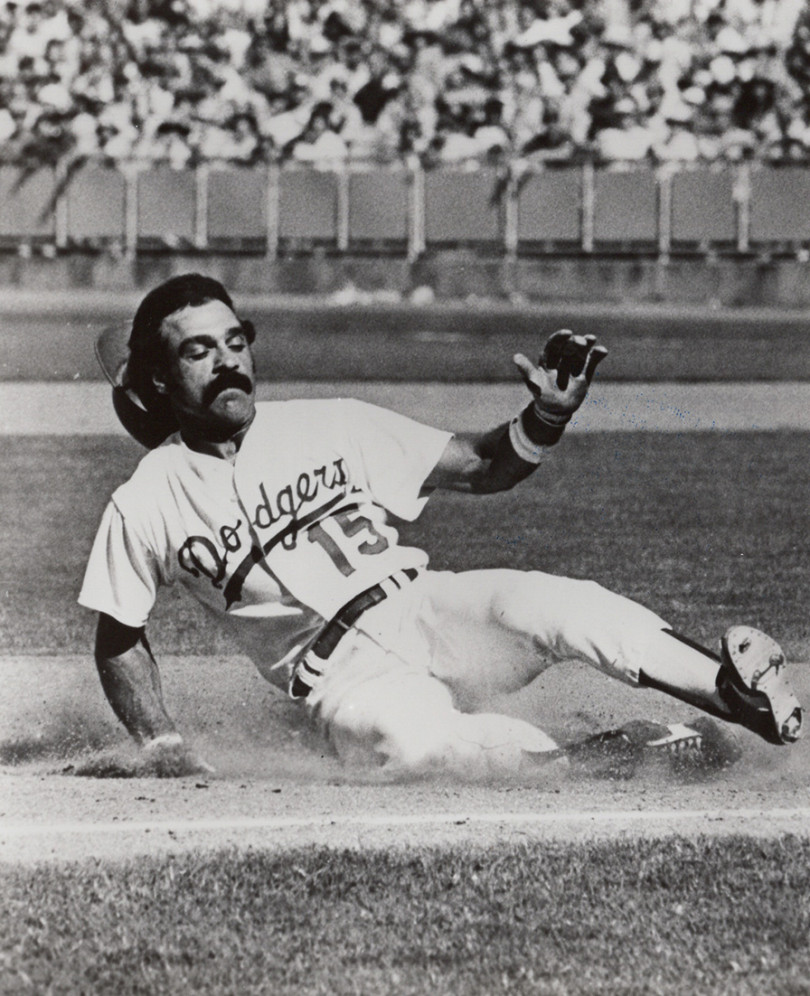
Drafted in January, 1968, Davey Lopes became part of the Dodgers’ longest standing infield (8 ½ years) in MLB history along with Steve Garvey, Bill Russell and Ron Cey. The Dodgers converted Lopes from an outfielder to a second baseman and he was a four-time National League All-Star. Following his playing career, Lopes also coached and managed in the major leagues from 1988-2017.
Feature
1968: A Good Draft Year
By Robert Schweppe
Walter O’Malley would readily admit he did not meddle with the evaluation of Dodger players during his time of ownership. He was a canny enough owner to hire excellent front office personnel who in turn, would hire dedicated, experienced, and diligent scouts and field staff to judge the next generation of Dodgers.
However, on one occasion, he did allow himself the luxury of optimism based on scouting reports he was told of players.
In September, 1968, O’Malley held a series of organizational meetings that involved Dodger front office personnel, the team’s manager, Walter Alston, and the major league coaches. The Dodgers had labored under two consecutive seasons with a below .500 record in 1967 and 1968. He thought it was a good opportunity to meet with the decision makers of his team to review how the club would become competitive next season.
“68 Dodgers still have greatest draft ever”
David Schoenfeld
ESPN. Com June 6, 2011
After one session of the meeting on September 19, 1968, O’Malley wrote in his appointment book that day, “Scouts-Good Draft Year.” Walter O’Malley 1968 Appointment Book Led by Scouting Director Al Campanis, Dodger personnel reported their anticipation of several talented players who had recently signed after being selected in the 1968 Free Agent Draft by the Dodgers.
The Dodgers were regarded as a competitive major league club with mostly players, scouted, drafted, and developed within the organization. And with the beginning of the Free Agent Draft, started in 1965, the work of the scouts became more competitive.
However, even though this was only the fourth Free Agent Draft in baseball history, Walter O’Malley and Dodger personnel hoped their draft would be as good as they anticipated.
“Dodgers' 1968 Draft haul remains gold standard”
Tracy Ringolsby
MLB.com, June 12, 2017
It is rare for baseball experts to have a consensus on any issue within the industry, but disparate publications as Baseball America, Cooperstown Expert, MLB.com, ESPN.com, Society of American Baseball Research.com, and the Pasadena Star News, are all in agreement: More than 50 years ago, the 1968 Dodger draft class, until another team overtakes them, remains the greatest in baseball history.
So what has made this 1968 draft the best in baseball and more than 50 years later, been regarded by experts to give it such praise?
The history of the free agent draft in Organized Baseball requires an explanation of the draft in the 1968 season. There were two drafts, one in January of the year and the larger draft of players, held in June. Each draft had a regular phase that consisted of players who never before had been selected in the draft.
The secondary phase consisted of players, who at some time in high school or college, had been selected in a previous free agent draft. If the player then failed to sign with the drafting club, he could return to play baseball at some collegiate level, either junior (now community) college, and different levels of the NCAA, again eligible for draft. In short, there were four separate drafts.
The January phase of the free agent draft was never considered to be a highly productive draft. There have been players selected in the January regular phase who have played in the major leagues, but the totals of big leaguers are sparse. Often the attempts to draft players in the January regular phase provided little value to the organization.
The January, 1968 regular phase of the draft was a washout for the Dodgers. They selected 10 players, and a few players of the group did sign a professional contract, but none would play in the majors. The “dream” 1968 draft of the Dodgers got started in the secondary phase.
Their first round choice in the 1968 secondary phase was an infielder from San Diego, Marv Galliher, who did not make the major leagues, but their second round choice was a gem.
“The 1968 Dodgers and the greatest draft class in history”
Rob Neyer
Society of American Baseball Research, June 19, 2017
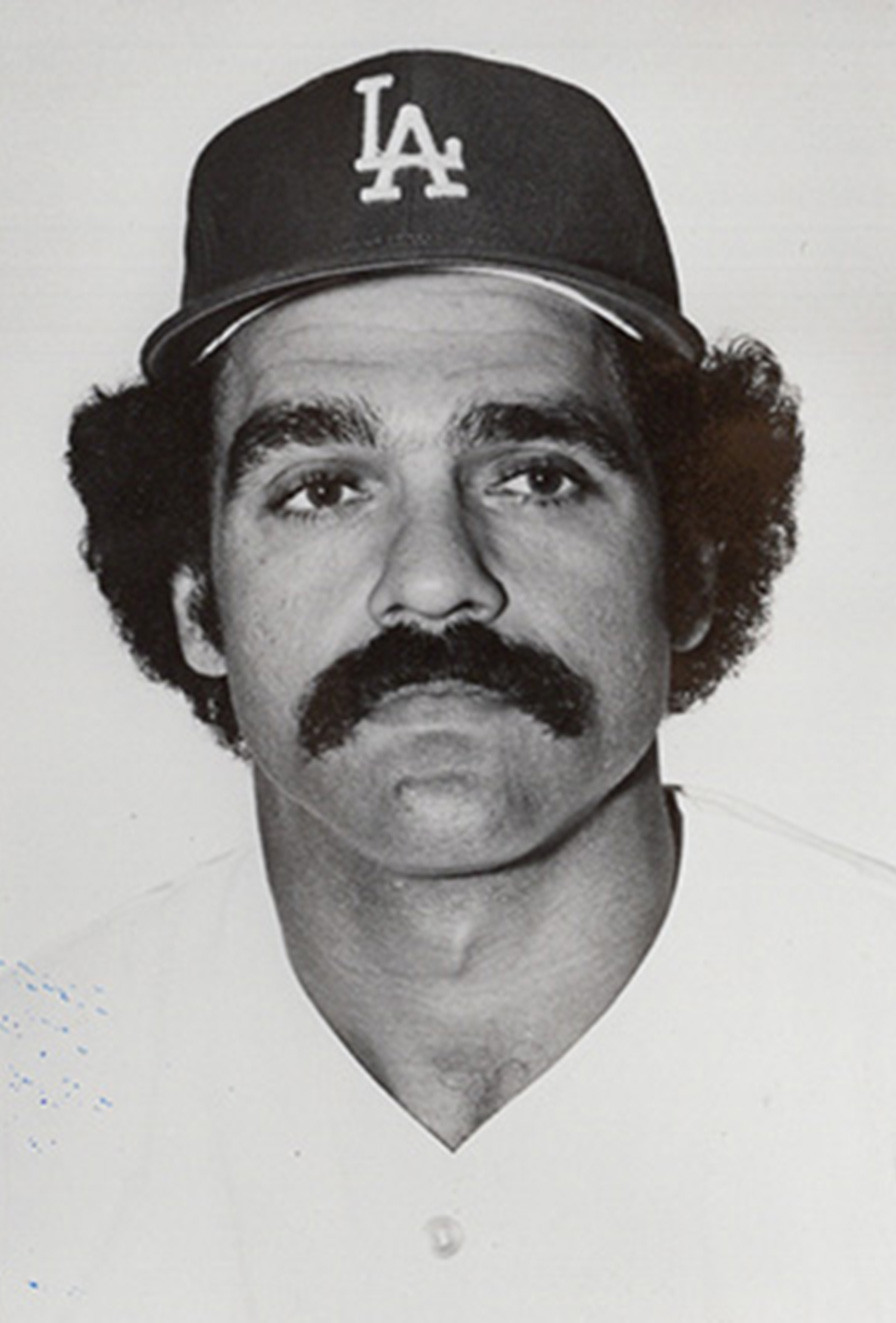
Dodger second baseman Davey Lopes, 1972-1981. Lopes was a converted outfielder to an All-Star second baseman by the Dodgers after his selection in the January, 1968 secondary free agent draft. He was named to four All-Star teams and won a Golden Glove in 1978.
Dodger scouts Bert Wells and John Keenan noticed a young outfielder playing for a small school in Kansas, Washburn University and they particularly liked his quickness and running speed. The outfielder would become well known as a Dodger offensive catalyst, Davey Lopes. Lopes, drafted as an outfielder, would be moved to second base and make four National League All-Star teams and play on the 1981 World Championship Dodgers. Two rounds later, the Dodgers went for pitching and drafted a left-hand pitcher, Geoff Zahn.
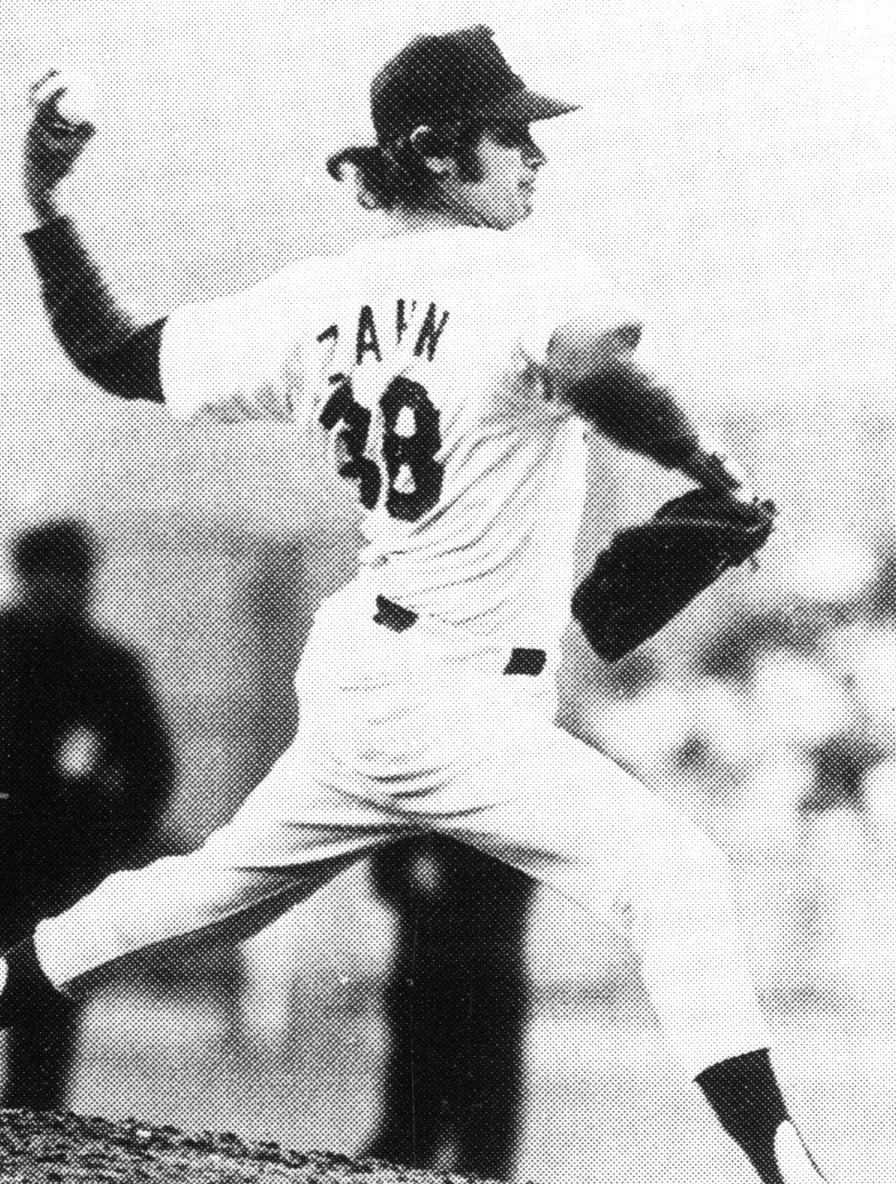
Dodger pitcher Geoff Zahn, 1973-1975 . The Dodgers acquired Burt Hooton from the Chicago Cubs in exchange for Zahn and Eddie Solomon. He won 111 major league games and won in double figures seven times in his career.
In the June, regular phase in 1968, the Dodgers had the fifth overall selection based on their won-loss record during the 1967 season. Three of the first four 1968 draft selections had major league careers including infielder Tim Foli, the first selection, Pete Broberg, a right-hand pitcher, and the fourth selection was a catcher from Kent State, Thurman Munson, selected by the New York Yankees.
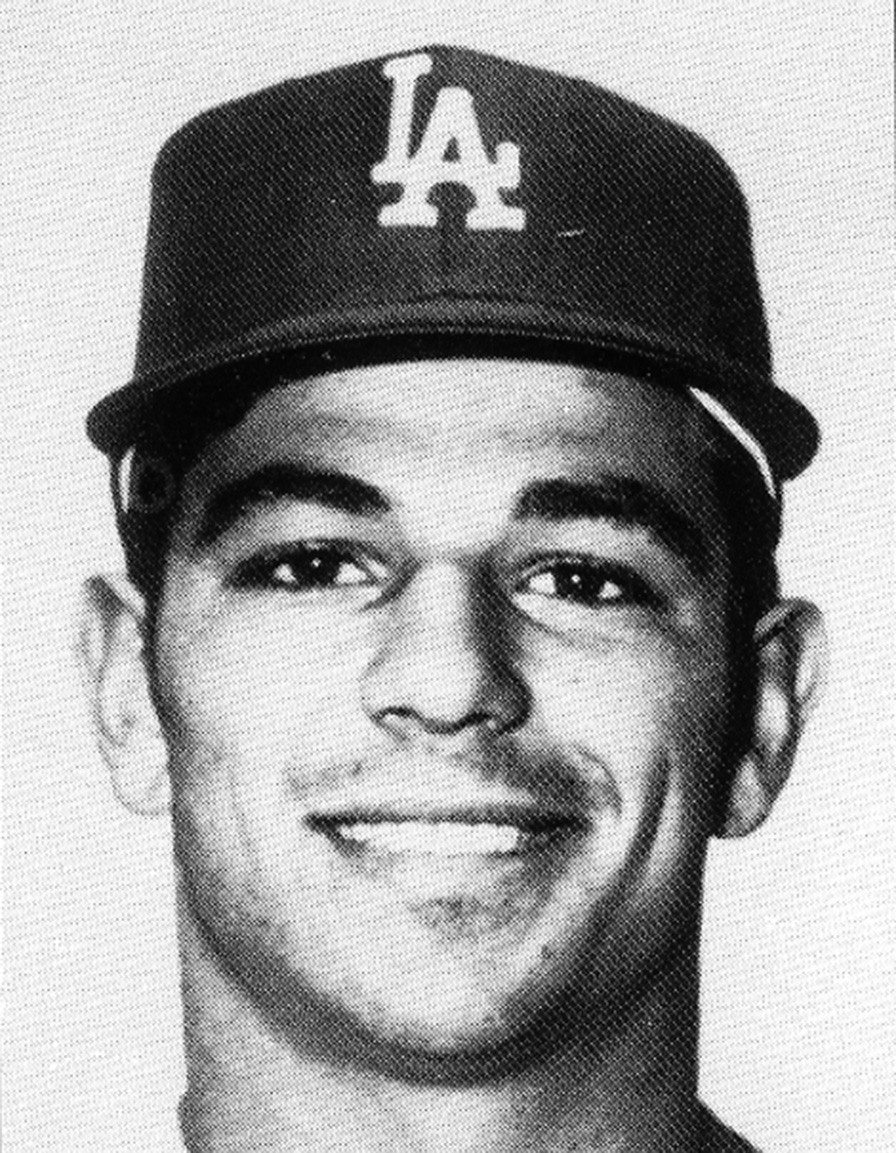
Dodger infielder Bob Valentine, 1969-1972 Valentine was the Dodgers’ first choice in the 1968 Free Agent Draft. He was included in a trade with the California Angels when the Dodgers acquired Andy Messersmith, who pitched for the 1974 National League Champion Dodgers. Valentine later managed the Texas Rangers, New York Mets, and the Boston Red Sox.
The Dodgers’ turn was fifth, and their first selection was a young outfielder from Rippowan High School in Stamford, Connecticut by the name of Bobby Valentine. Valentine had several of the abilities they sought in a ball player, the ability to hit, field, throw, and run and scouts felt he would develop sufficient power to help the ballclub.
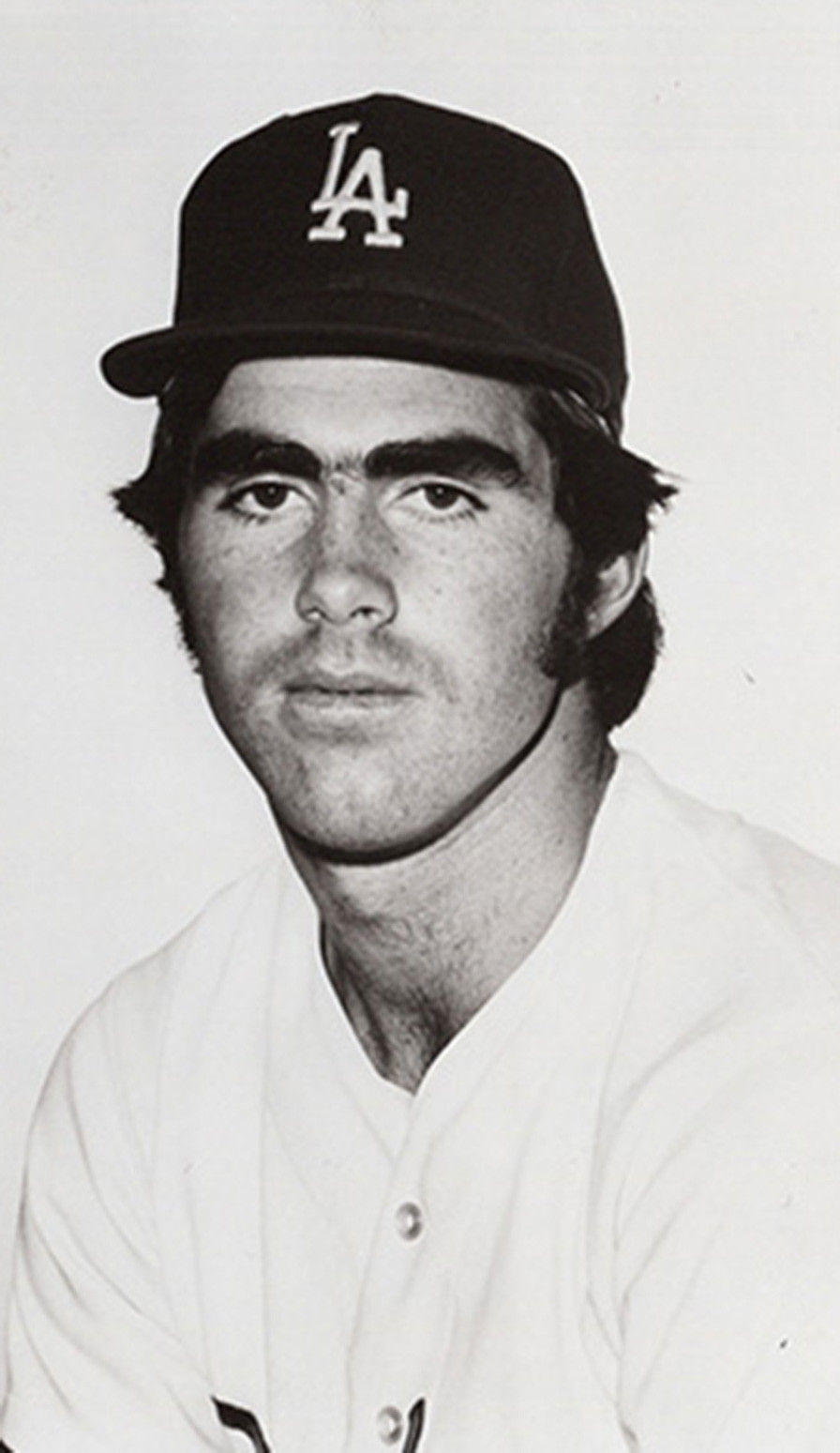
Dodger outfielder Bill Buckner, 1969-1976. He played for the 1974 National League Champions Los Angeles Dodgers. Buckner won the 1980 National League batting title when playing for the Chicago Cubs. The Dodgers acquired 1981 playoff hero Rick Monday from the Cubs in exchange for Buckner and Ivan DeJesus.
The Dodgers were pleasantly surprised to see that a young outfielder from Vallejo, California, Bill Buckner, was still eligible to be chosen when their turn in the second round came up. They had liked this young hitter well enough to believe he would be taken in the first round, and Buckner would be their second choice.
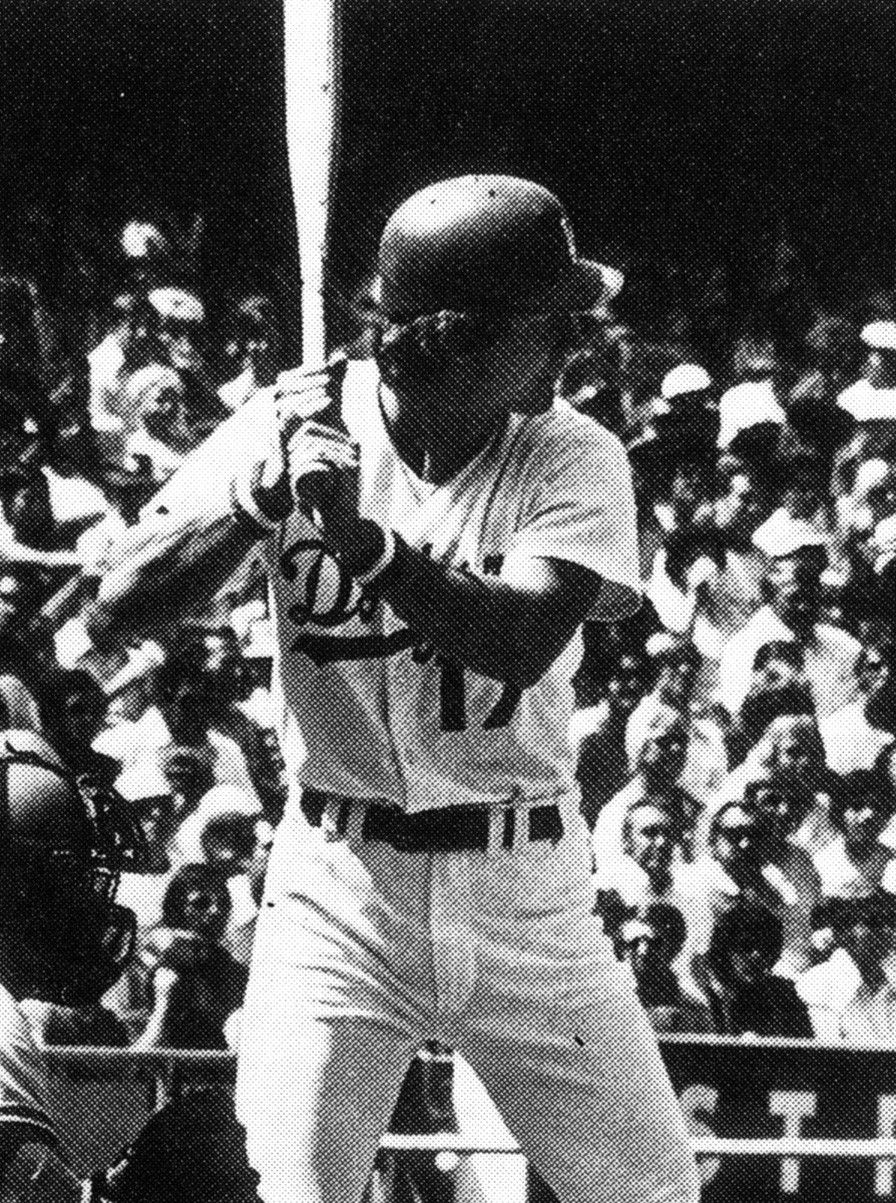
Dodger outfielder Tom Paciorek, 1970-1975. Paciorek was traded to the Atlanta Braves in 1975 in a deal that brought Dusty Baker to the Dodgers. He played 18 seasons in the major leagues.
The regular phase of the 1968 draft would continue to go well for the Dodgers. The fifth round found the Dodgers drafting a power hitter from the University of Houston, Tom Paciorek. In the eighth round would yield Joe Ferguson, an outfielder from the University of Pacific in Northern California. The ninth round had the Dodgers selecting right hand pitcher Doyle Alexander from Woodlawn High School in Alabama.
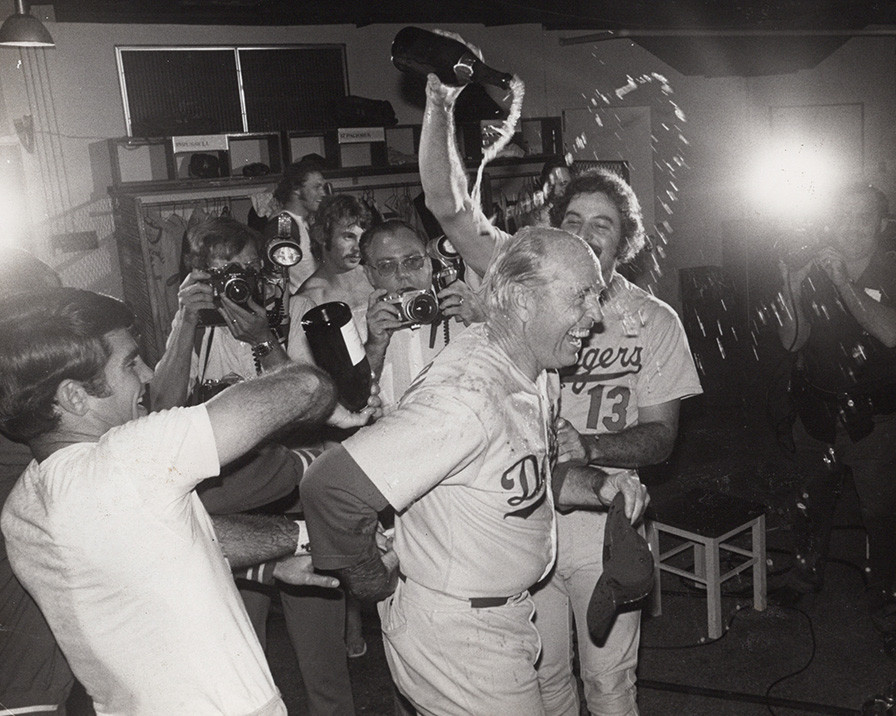
October 1, 1974, Houston Astrodome visitors clubhouse, Manager Walter Alston is the center of attention as the Los Angeles Dodgers celebrate winning the 1974 National League Western Division title. Two of the main players from that 1974 club were acquired from the Dodgers’ great 1968 draft. Steve Garvey (far left) and No. 13 Joe Ferguson (behind Alston) were part of the 1968 draft as players from that draft won their first N.L. Division championship.
Most clubs would have been deliriously happy with the draft thus far, but the Dodgers still had the secondary phase to complete. And what a phase it would be!
The secondary phase operated in a different fashion from the regular phase. The regular phase draft order was based on the winning percentages of the club from the previous season, allowing lower finishing clubs to be higher in the draft selection. However, the secondary phase in June was based on a lottery basis among the clubs.
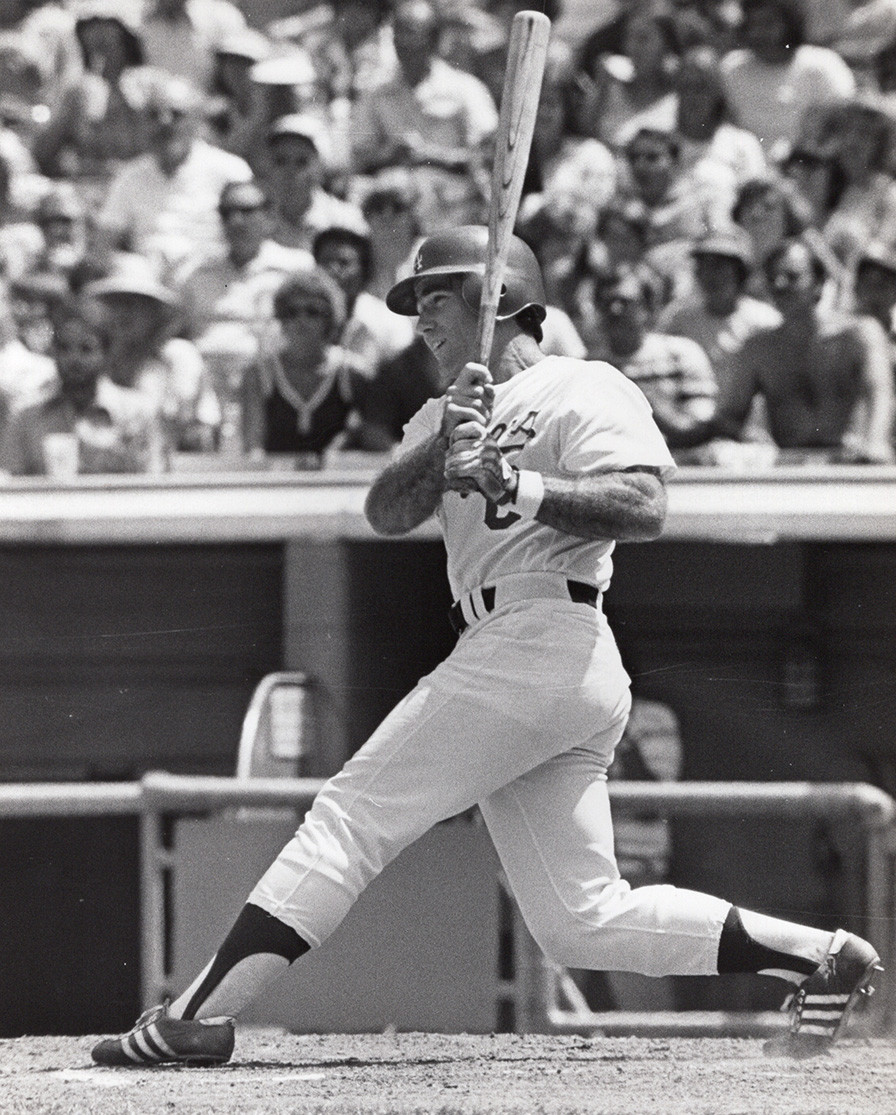
Mid 1970s, Dodger Stadium. Steve Garvey, the Dodgers’ first selection in the 1968, June secondary phase, made his major league debut in 1969. He would be elected the 1974 National League Most Valuable Player, be named a perennial All-Star and win Gold Gloves after switching his position to first base.
They had no luck in the lottery, just good scouting. The Dodgers did not draft until the 13th selection of 20 teams in the secondary phase. Still, they had the prize of the draft when they selected a 5 foot-10 inch third baseman from Michigan State who had also played football and his name was Steve Garvey.
Garvey was overlooked by many clubs for lack of size, but all the Dodgers could see was how he could swing a powerful bat. The Dodgers did not stop with just Garvey in the secondary phase. Their second selection would be Sandy Vance, a right-hand pitcher from Stanford, who would be in the majors just two seasons later and would win seven games for the Dodgers in 1970.
“Many call it the greatest draft in the history of pro sports”
Jim Smiley
Cooperstown Expert, August 20, 2015
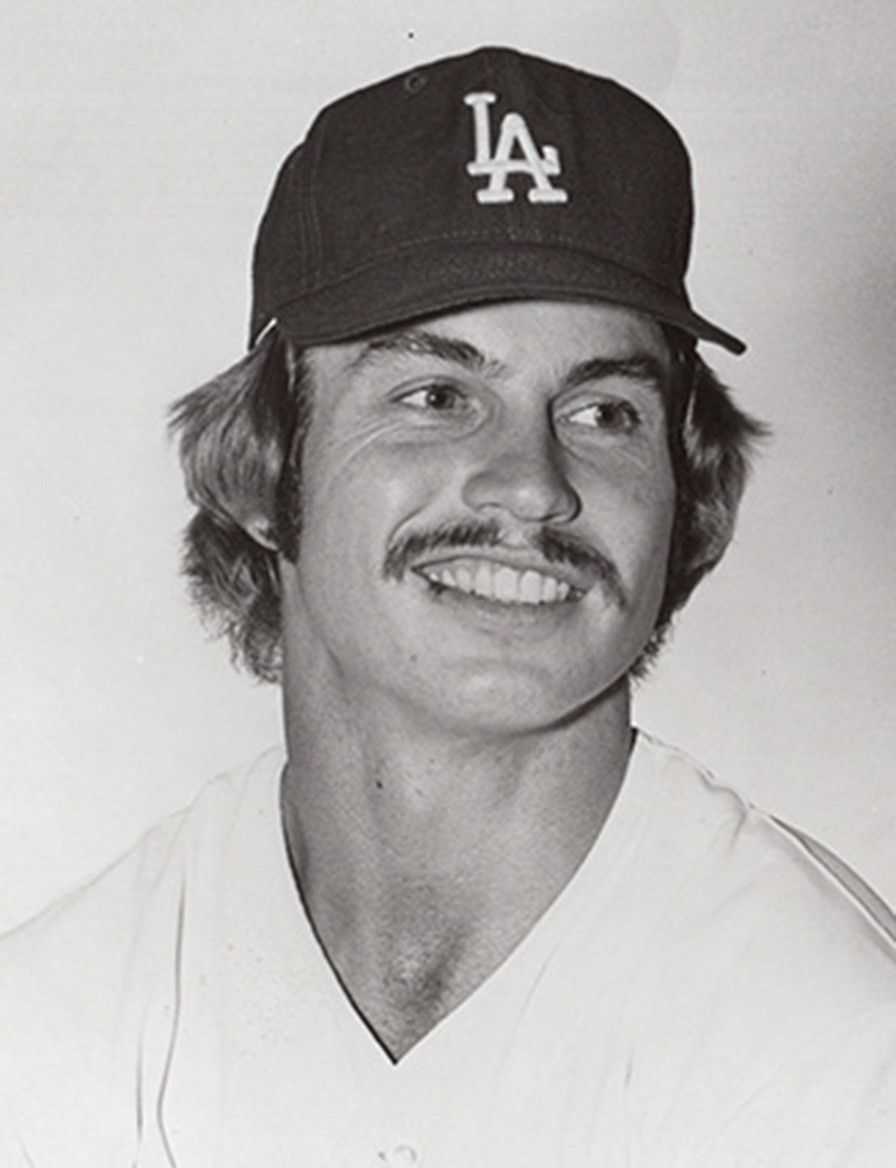
Ron Cey was the third baseman on the major league record setting infield of himself, Steve Garvey, Davey Lopes, and Bill Russell. He played on six National League All-Star teams and a tri-Most Valuable Player of the 1981 World Series.
The third selection in the draft would be a third baseman, approximately the same size as Garvey and again, overlooked by scouts for his size. But the Dodgers believed in their approach of getting the best young talent and developing the player, and when they had their chance, they selected a third baseman from Washington State with one of the shortest names in major league history, Ron Cey. He would fill the third base hole for the Dodgers from 1972 to 1982, become an All-Star and play for the 1981 World Series Champions.
The Dodgers’ approach for raw talent would work. Davey Lopes, Geoff Zahn, Bobby Valentine, Bill Buckner, Tom Paciorek, Joe Ferguson, Doyle Alexander, Steve Garvey, and Ron Cey would all make significantly impactful contributions to teams in the next two decades.
However, there is more to the 1968 draft than just having good scouts, drafting raw talent and developing the skills of players. The 1968 Dodger draft is the greatest for two other particular reasons.
The second reason was the Dodgers’ willingness to experiment and have their players try other positions that were better suited for them. The team called it “coconut snatching” and the concept was developed by Branch Rickey.
Rickey said the term came from watching two workers remove coconuts from trees. The first worker would be up in the tree and would pick the coconuts and throw them down to the worker on the ground, preventing the coconuts from being broken. In Rickey’s mind, this equated to the idea of a player first playing one position and then moving the player to a position where his talent might be best utilized.
“Dodgers' class of '68 tops list of 10 best Drafts.”
Jim Callis
MLB.com, May 27, 2019
The concept of this approach was a remarkable benefit for the Dodgers. Three players, Ferguson, Garvey, and Lopes, selected in the 1968 draft year would be moved to another position from where they were first acquired. Garvey went from third base to first base, Lopes to second base from the outfield and Ferguson from outfielder to catcher.
The third factor that makes the 1968 draft so remarkable is little known, but just as productive for the team and that was the team ability to make valuable acquisitions.
The first player from the 1968 draft to be employed in this fashion was Alexander. Alexander went from the Dodgers to the Baltimore Orioles with three players in December, 1971 so the Dodgers could obtain Frank Robinson. The value of the Robinson deal would be revealed one season later when the Dodgers traded Robinson to the California Angels as part of the Andy Messersmith trade on November 28, 1972.
“68 draft class tops them all”
Pasadena Star-News
August 29, 2017
Valentine would be traded with Robinson and three players for Messersmith and Ken McMullen. Messersmith would win 53 games in the next three seasons and win 20 games in 1974 and pitch in the 1974 World Series.
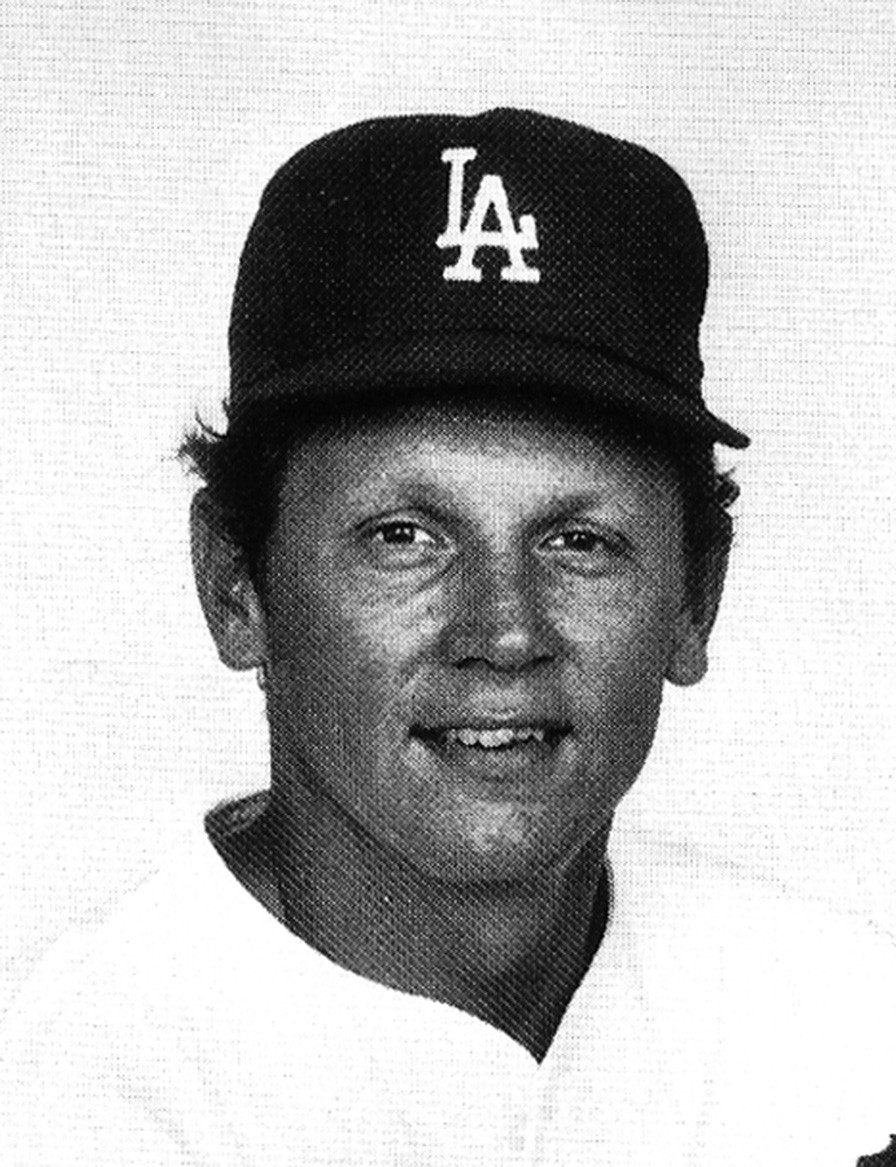
Dodger pitcher Burt Hooton, 1975-1984. Hooton would be a regular in the Dodger rotation and was named the 1981 NLCS Most Valuable Player for wins in Game 1 and Game 4. He started and won Game 6 of the 1981 World Series that gave the Dodgers the World Championship.
Next, Zahn would be assigned to the Chicago Cubs with another player in return for Burt Hooton in 1975. Hooton would win in double figures in six seasons for the Dodgers and pitch in three World Series, and win the clinching Game 6 in the 1981 World Series.
Paciorek would be matched with Lee Lacy, Jerry Royster, and Jim Wynn to the Atlanta Braves for outfielder Dusty Baker and infielder Ed Goodson. Baker would provide power in left field and help the Dodgers to three World Series and one World Championship.
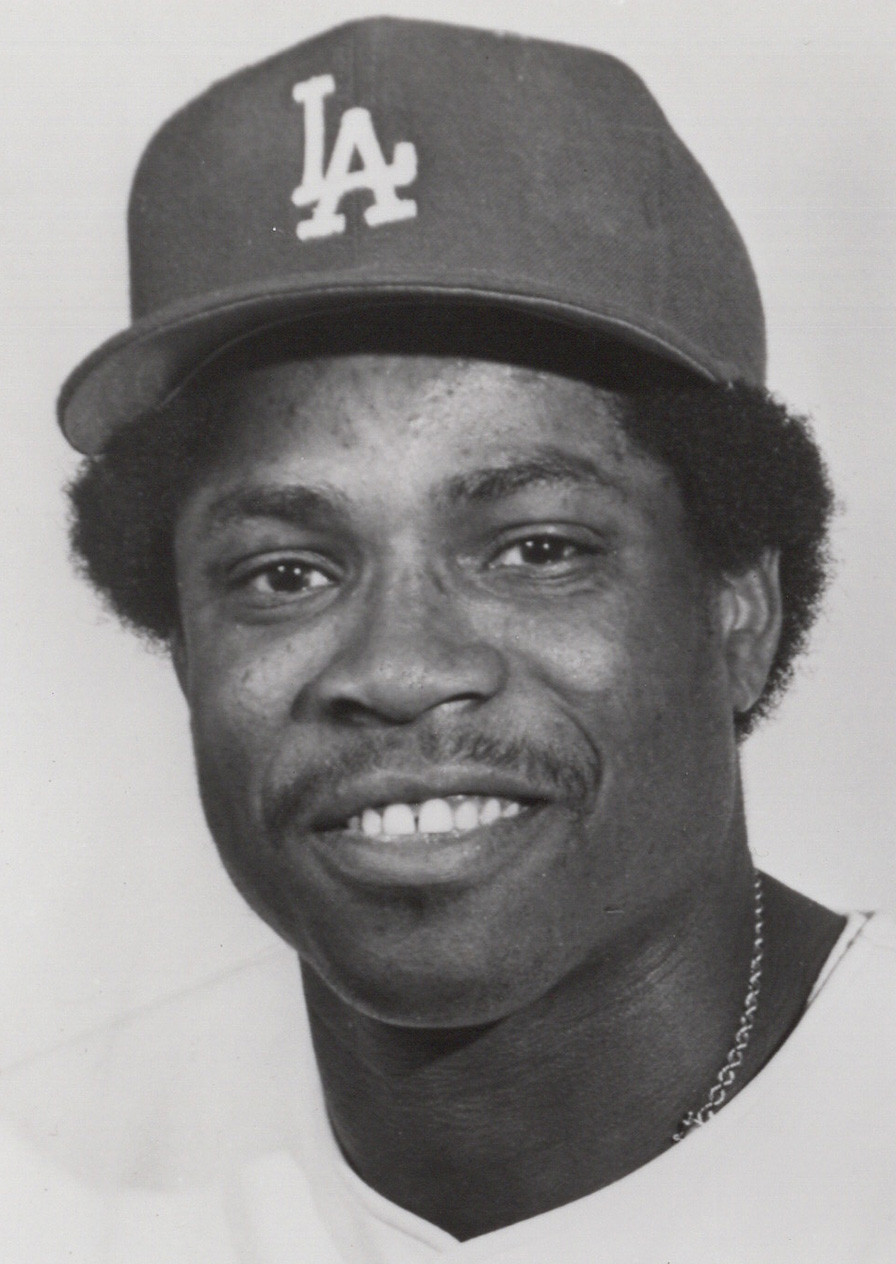
Dusty Baker was acquired in a multi-player trade from the Atlanta Braves on November 17, 1975 and starred as a Dodger outfielder from 1976-1983.
Ferguson would be assigned to the St. Louis Cardinals with another player as the Dodgers acquired Reggie Smith. Smith would lead the Dodgers to World Series in 1977, 1978 and the 1981 World Championship.
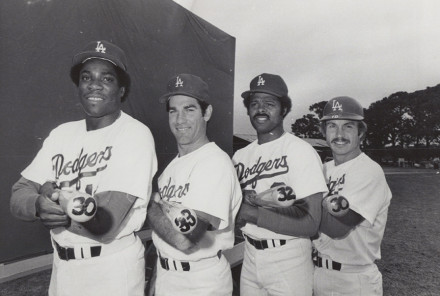
(L-R): Dusty Baker; Steve Garvey; Reggie Smith; Ron Cey. The four Dodger players who set a major league record by each hitting 30 or more home runs in the 1977 season. That had never been achieved in major league history. In what was considered to be the final at bat for Dusty Baker in the 1977 season, he homered so the Dodgers could establish the record. Baker would later manage the 2022 Houston Astros to a World Championship. Cey would become the Dodgers’ fifth all-time home run hitter. Garvey was elected the 1974 National League MVP. Smith played 17 seasons and hit 314 home runs in his career. He played for the Dodgers from 1976-1981. All four players were on the 1981 World Championship team.

Monday is a Dodger hero and an American hero. Acquired from the Chicago Cubs in exchange for Bill Buckner and Ivan DeJesus, he played for Dodger World Series team in 1977-1978 and the 1981 World Championship team. He drove in the tie-breaking run in Game 5 of the National League Division Series against the Houston Astros. In Game 5 of the National League Championship Series, his two-out home run in the top of the ninth inning in Montreal sent the Dodgers to the 1981 World Series where they won in six games. On April, 25, 1976, as a member of the Chicago Cubs, he preserved the American flag from being burned in the outfield at Dodger Stadium by two protestors. The Dodger Stadium message board stated, “Rick Monday, you made a great play.”
Buckner would be traded to the Chicago Cubs with Ivan DeJesus and the Dodgers would receive Rick Monday and Mike Garman. It would be Monday who played a vital role for the Dodgers as they played in the 1977 and 1978 World Series. Then, Monday, on a cold Monday in Montreal, would be the hero who would hit a ninth inning home run to defeat Montreal in the National League Championship Series as the Dodgers advanced to win the 1981 World Series.
“The Dodgers not only had the best Draft of all time in 1968, but they don't even have a legitimate challenger for that title.”
Jim Callis
MLB.com, May 27, 2019
The combination of drafting raw talent, the development of those young players, the change of position for some selected players, and finally, the excellent acquisition of talent would pave the way for the Dodgers during the next two decades. The Dodgers would win National League pennants in 1974, 1977, 1978, and 1981, and win a World Championship in 1981. From 1969 until 1982, the Dodgers would average 91 wins a season and finish lower than second only twice.
In 1990, Baseball America called the Dodgers’ 1968 draft the greatest free agent amateur draft in baseball history and in 2008, they saw no reason to change the honor, awarding a cover story on the topic.
Greatest draft in baseball history? For Walter O’Malley, writing in his appointment book in September, 1968, he simply called it a “Good draft year.”

